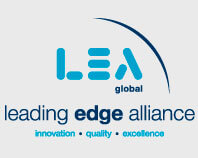In short: Sales tax compliance has only increased in complexity and cost since the Supreme Court’s 2018 Wayfair decision, and many businesses are hoping for solutions that simplify and streamline compliance.
On June 14, 2022, the United States Senate Committee on Finance heard testimonies from small business owners, members of the U.S. Government Accountability office and members of the Streamlined Sales Tax Governing Board on the increasing complexity and cost of sales tax compliance since the U.S. Supreme Court’s 2018 Wayfair decision.
As previously discussed, after the Wayfair decision, states can impose sales tax collection and filing requirements on remote sellers with no in-state physical presence, so long as the remote sellers meet or exceed certain economic thresholds (“economic nexus”). To date, all states that impose a sales tax have now adopted, or will soon adopt, an economic nexus law. However, states’ broad adoption of economic nexus laws have left small business owners to juggle the added costs of third-party sales tax compliance solutions, tax and legal consulting fees, as well as state registration and licensing fees – all in an attempt to “beat the clock” and become compliant before a state pursues an even more costly audit. Committee Chairman Ron Wyden of Oregon described these challenges as “[forcing] small businesses into becoming tax collectors.”
During the Committee hearing, testimonies highlighted criticism of states’ varied economic nexus thresholds with respect to sales and transaction totals. For example, while Georgia only requires sales in excess of $100,000 to establish economic sales tax nexus, New York’s economic nexus rule requires both sales in excess of $500,000 of tangible personal property and more than 100 sales transactions of tangible personal property delivered in the state. Additional criticism focused on the types of sales states include in calculating the threshold, as some states use gross sales to determine economic nexus, while others may exclude wholesales or marketplace sales in their calculation. Another issue discussed was states’ differing measurement periods to determine nexus, such as the use of calendar-year sales versus the preceding 12-months’ sales.
“The more I learned, the less I knew, and the more complicated it all became,” one witness testified, which accurately describes the overwhelming challenge business owners face in complying with the evolving landscape of e-commerce and sales tax.
There appeared to be a shared sentiment that standardized economic nexus standards would alleviate complexity around determining where a business has a sales tax collection responsibility. Proposed solutions included:
- A centralized administration clearinghouse for registration, filing and payment of sales tax;
- Uniformity around due dates and filing frequencies across states;
- Uniform classifications and definitions of product offerings and exemptions;
- A one-year phase in period between meeting economic nexus standards and registering with a state;
- Simplification of state and local sales tax rates to a single rate for remote sellers; and,
- Protection from a sales tax obligation creating a non-sales tax obligation (i.e., a sales tax obligation giving rise to franchise, gross receipts or income tax filing requirements).
States may prove hesitant to these proposals and point to existing efforts made by the Streamlined Sales and Use Tax Agreement (“SSUTA”), which aims to simplify and modernize sales and use tax administration in order to substantially reduce the burden of tax compliance. However, small business owners assert SSUTA has its limitations since not all states that impose a sales tax are members, the states that are members still retain sovereignty over determining product taxability, and reliance on expensive software for ongoing compliance would still be an issue.
Learn More
Contact Bennett Thrasher’s State and Local Tax experts for assistance with determining where your business may have sales tax collection requirements, tax exposure mitigation opportunities and compliance considerations.




